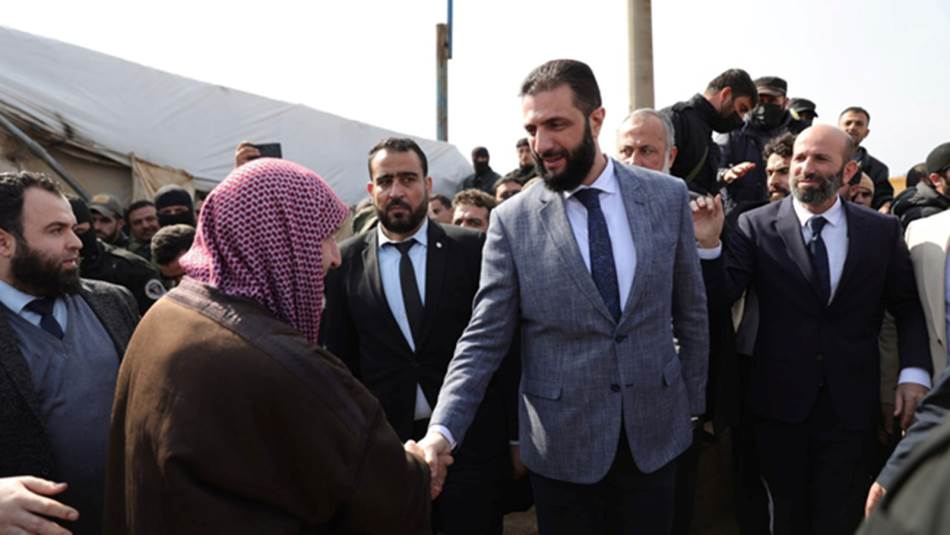Syria’s new leadership, under President Ahmad al-Sharaa, has embarked on a strategic economic transformation centred on internal integration and regional cooperation, particularly with Turkey. His recent visits to Idlib and Aleppo mark a pivotal step in establishing a national economic recovery, leveraging local strengths, revitalizing war-affected areas, and fostering cross-border partnerships. This approach underscores a carefully designed strategy aimed at stabilizing the economy, fostering long-term development, and positioning Syria within an increasingly economy-driven global landscape.
Idlib and Aleppo: Foundations of Economic Revival
The choice of Idlib and Aleppo for the president’s first domestic visits was highly symbolic. Idlib played a central role in the Syrian revolution and emerged as an economic model of resilience, while Aleppo has long been Syria’s industrial and commercial heart, renowned for its entrepreneurial spirit and adaptability.
- Idlib: A Model for Post-War Economic Resilience
- Idlib has developed into a largely self-sustaining economic zone, integrating agriculture, industry, and trade.
- Its strong economic ties with Turkey have provided a degree of stability not seen in other war-ravaged regions.
- The government aims to replicate Idlib’s success across other Syrian provinces, promoting localized economic resilience.
- Aleppo: Syria’s Industrial Core
- Aleppo’s economic significance remains substantial, with its industries and business community driving both domestic trade and international commerce.
- Many displaced Aleppine entrepreneurs revitalized local economies abroad and are now positioned to contribute to Syria’s reconstruction.
- The government is prioritizing the restoration of Aleppo’s industrial and manufacturing base to accelerate national economic recovery.
Geographic and Sectoral Economic Coordination
A core objective of these visits is to synchronize Syria’s economic potential across different regions by:
- Strengthening economic ties between Idlib and Aleppo to create a unified trade and production corridor.
- Expanding successful models, such as Idlib’s integration with Turkey, to other Syrian provinces.
- Revitalizing the industrial and agricultural sectors to achieve self-sufficiency and reduce reliance on imports.
Revitalizing War-Torn and Rural Areas
- Many rural regions suffered the most destruction during the war and are now central to Syria’s economic recovery.
- These areas are not just in need of reconstruction—they possess significant agricultural, trade, and industrial potential.
- The government is committed to rebuilding supply chains and infrastructure, enabling rural communities to reintegrate into the national economy.
Strengthening Domestic Economic Foundations
The administration recognizes that economic recovery is essential to achieving political and social stability. The government seeks to:
- Enhance local financial strength to reduce dependency on foreign aid.
- Encourage entrepreneurship by alleviating economic burdens and fostering a stable business environment.
- Shift from a wartime economy to a sustainable, productivity-driven model.
Regional Economic Integration with Turkey
The integration of northern Syria with Turkey has proven to be one of the most successful economic models in the region. President al-Sharaa’s recent visit to Turkey signals the government’s intent to deepen economic cooperation, ensuring Syria’s recovery is anchored in regional trade and investment partnerships.
Idlib’s economy is considered more robust than that of all other Syrian provinces combined, supported by a functional trade, agriculture, and industrial base.
Aleppo’s strategic location makes it a natural hub for Syrian-Turkish trade and manufacturing partnerships.
The government’s long-term strategy aims to align Syrian and Turkish economic interests, fostering mutual economic growth.
Expanding Economic Corridors Beyond Northern Syria
While northern Syria remains the immediate focus, there are plans to expand economic integration to other border regions by strengthening trade agreements to enhance Syrian exports, initiating joint infrastructure projects in transportation, energy, and logistics, and offering investment incentives to encourage Syrian businesses to grow their trade with Turkey and other regional markets.
A Well-Prepared Economic Vision
A defining aspect of this economic transformation is its high degree of preparedness. The structured approach indicates that economic recovery was meticulously planned well before political shifts took place. The new leadership has formulated strategic economic policies in anticipation of post-war governance, set clear priorities—beginning with Idlib and Aleppo before expanding to other regions—and positioned Syria for regional economic integration, ensuring it remains actively engaged in the evolving global economic landscape.
Conclusion: A Deliberate Shift Toward Economic Stability
President al-Sharaa’s recent visits confirm that Syria’s economic transformation is actively underway. By focusing on Idlib and Aleppo, the government is laying the groundwork for:
- A unified, self-sufficient national economy.
- The reconstruction of war-torn areas to restore economic functionality.
- The expansion of strategic economic ties with Turkey and other regional partners.
If successfully implemented, this strategy could establish Syria as a rising economic power within the region. However, its success hinges on maintaining financial stability, sustaining investment momentum, and ensuring economic reforms are inclusive and equitable. Syria now stands at a turning point, transitioning from post-war survival to economic resurgence, with the potential to redefine its role in the broader Middle Eastern economic framework.
This article was translated and edited by The Syrian Observer. The Syrian Observer has not verified the content of this story. Responsibility for the information and views set out in this article lies entirely with the author.


